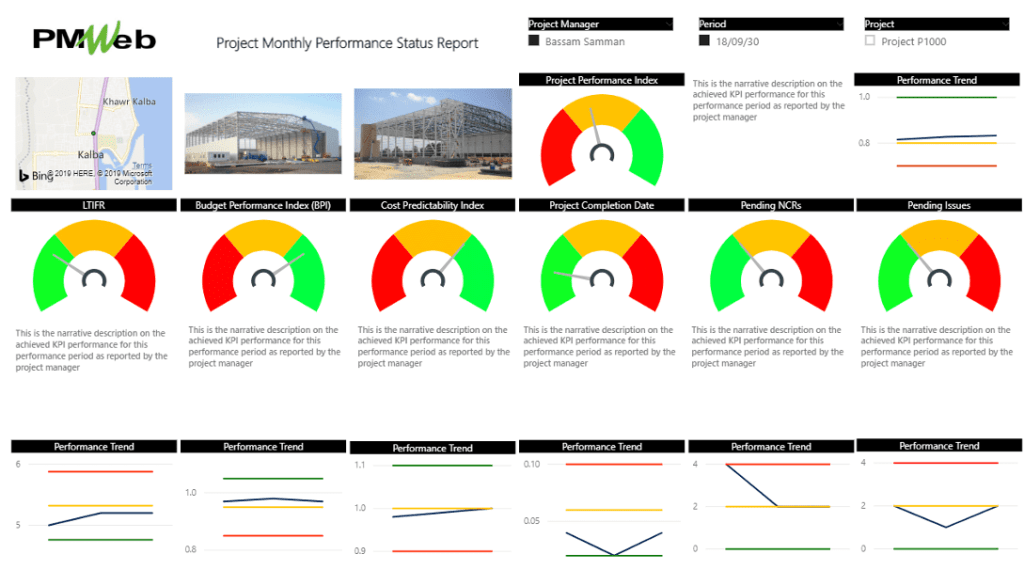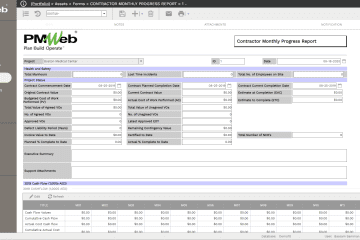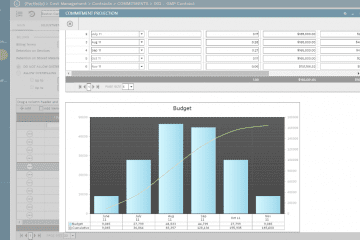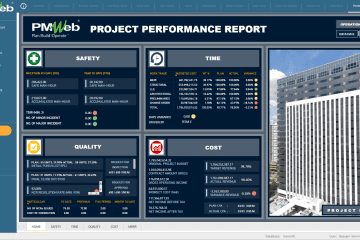The article “Traffic Light Performance Reporting for Capital Projects” detailed how PMWeb can report on six key performance indicators (KPIs) to assess the seventh KPI: the overall Project Performance Index (PPI). The six KPIs are the lost time injury frequency rates (LTIFR), budget performance index (BPI), cost predictability index, project completion date, pending NCRs, and pending issues.
Those KPIs usually calculate from the robust, reliable, relevant, auditable, appropriate, attributable, traceable, transparent, and trustworthy data captured in the different PMWeb project management processes by the right team member, in the right format, and in the right sequence. Nevertheless, when it comes to formally reporting those KPIs to other stakeholders, the project manager needs to confirm that he/she agrees with those KPIs as well as provides an explanation of the reported KPIs values in a narrative format so that senior stakeholders can understand the implication of the reported KPIs values on the project’s successful delivery.
The PMWeb custom form builder allows creating a form that formalizes the submission of the project’s key performance indicators. The form includes a field to identify the reported performance period, project manager name, project control system (PCS) manager/engineer name along with the particulars of the project. In addition, for each KPI, the form includes a field to add the reported KPI score value as well as where the project control manager will add the calculated values for each KPI and a field to provide the details of the reported performance. The form can also be used as an interim solution if the organization did not implement the complete PMWeb processes to calculate those values or depends on a third party providing the score values of those KPIs. In this case, the organization can use this form to provide the data needed for the project performance dashboard.
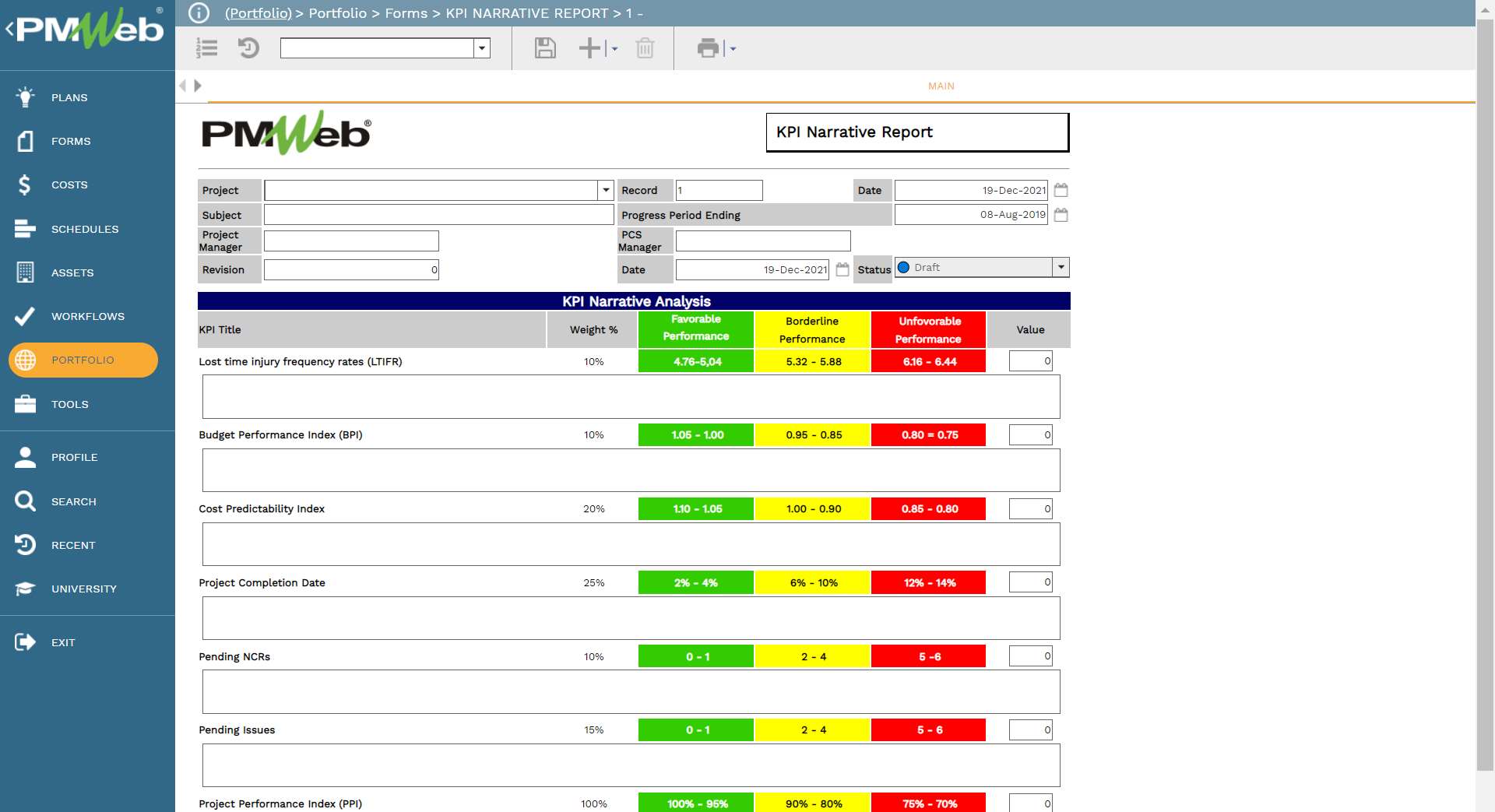
The form attachment tab allows attaching supportive documents used to calculate the reported KPI values. This is a must requirement when the reported performance KPIs are not calculated by PMWeb. This requires uploading and storing the project’s safety report, cost report, updated schedule, NCR log, issues log, and progress photographs among others into the PMWeb document management repository and then attaching them to the KPI Narrative Report form. This ensures that the reported KPI’s performance values are auditable. It is highly recommended that a folder is created for each reported progress period to ensure that all supportive documents for the reported performance period are properly organized and can be easily accessed and reviewed.
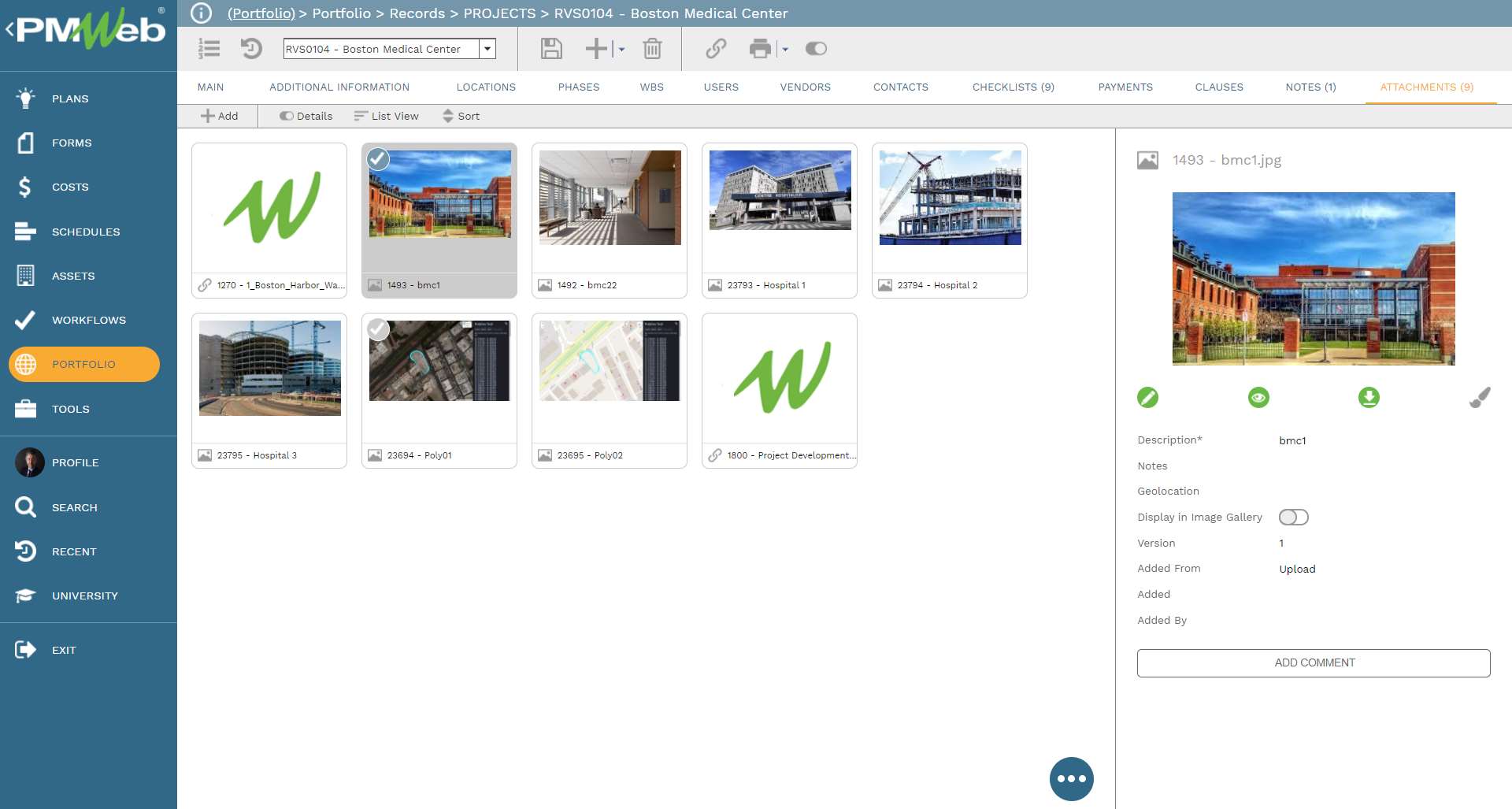
The KPI Narrative Report form has a pre-assigned workflow to ensure that the reports are formally reviewed and approved as detailed in the project management procedures. The custom form can be configured to enable each team member who is part of the workflow steps to only provide the score data for the KPI assigned to him or her. This further enforces accountability in reporting the KPI performance score values.

By having the formally approved progress data submitted for the current progress period, PMWeb can be used to create the project’s monthly performance report. The report displays the score values for KPI for the current period in the format of a tachometer along with the narrative provided by the project manager or any other assigned project team member to provide the report reader an insight into the KPI performance. Since PMWeb captures and stores the KPI score values for all progress periods, a three-month trend chart can also be added for tracking the KPI. The trend chart shows the pre-agreed performance tolerance levels as green for favorable performance, cyan for average performance, and red for unfavorable performance. At the summary level of the progress report, which display the Project Performance Index KPI, the report could display the geospatial location of the project on the ESRI map and the progress photographs for the current period.
